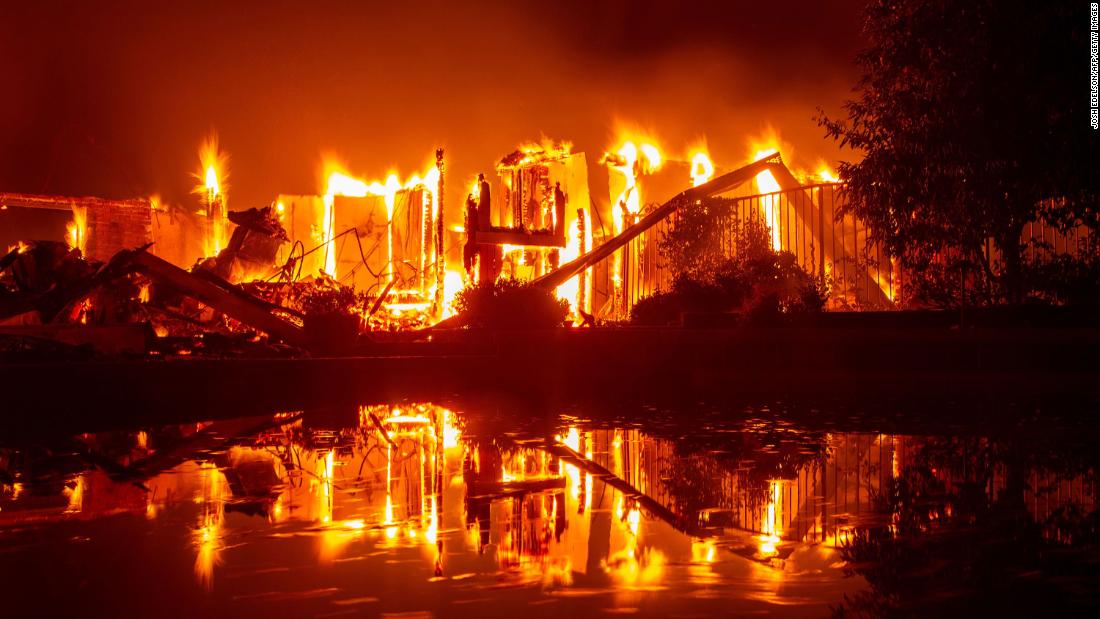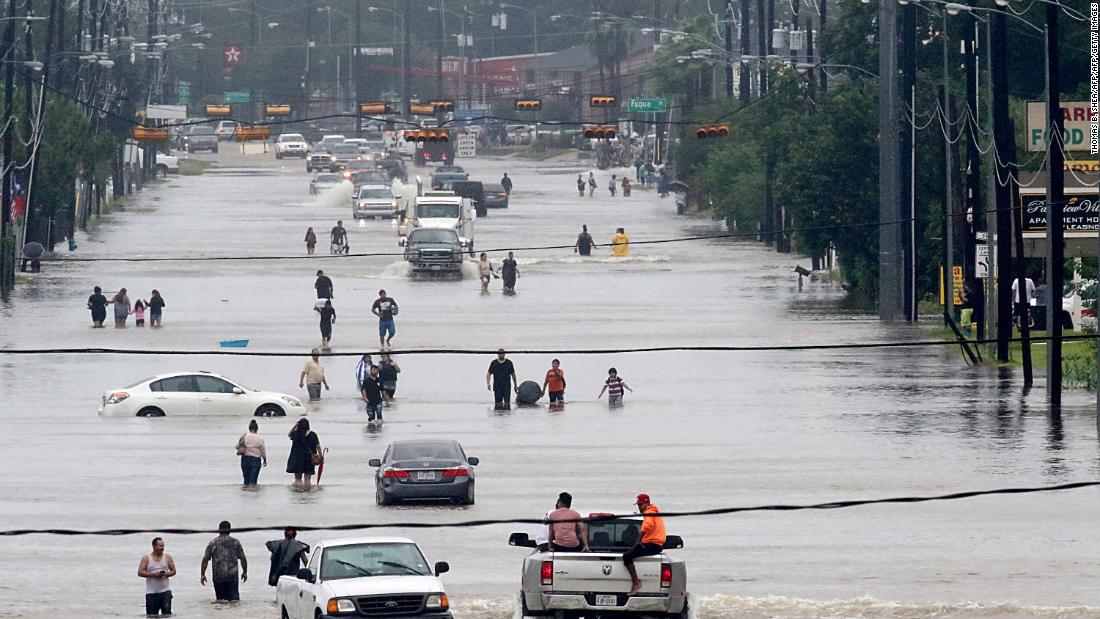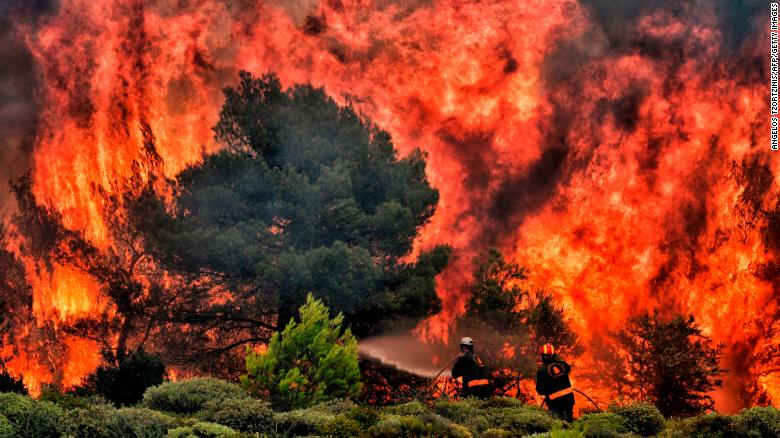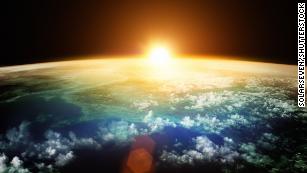Our climate plans are in pieces as killer summer shreds records
(CNN)Deadly fires have scorched swaths of the Northern Hemisphere this summer, from California to Arctic Sweden and down to Greece on the sunny Mediterranean. Drought in Europe has turned verdant land barren, while people in Japan and Korea are dying from record-breaking heat.
Climate change is here and is affecting the entire globe -- not just the polar bears or tiny islands vulnerable to rising sea levels -- scientists say. It is on the doorsteps of everyday Americans, Europeans and Asians, and the best evidence shows it will get much worse.
This summer, 119 people in Japan died in a heat wave, while 29 were killed in South Korea, officials there say. Ninety-one people in Greece died in wildfires, and ongoing fires in California have taken at least eight lives. Spain and Portugal sweltered through an exceptionally hot weekend with a heat wave that has killed three people in Spain and pushed temperatures toward record levels..
Deadly heat waves will become more frequent and occur in more places on the planet in coming decades, according to a study published last summer in the journal Nature Climate Change. Extreme heat waves are frequently cited as one of the most direct effects of man-made climate change.
Remarkably, scientists can now work out in just a matter of days how much human-induced climate change has had to do with a particular weather event, using a combination of observation, historical data and current information from weather stations.
2018 is on pace to be the 4th-hottest year on record
"The European heat wave was at least twice as likely to happen because of human intervention. Based on findings in Ireland it was double -- and we know that with very high confidence -- and based on data from all other weather stations it was more than double," said Karsten Haustein from the World Weather Attribution Project, part of Oxford University's Environmental Change Institute.
Scientists have been able to use this kind of modeling for more than a decade, but improved technology now allows them to do it nearly in real time, letting people understand the links between what they are seeing and climate change.
Despite the deadly summer, overwhelming evidence that humans are altering the planet, and ever-improving science that links specific weather events to global warming, the international politics around the issue of climate change are in disarray. And there are alarming signs that the planet may be in worse shape than ever before.

A house is caught up in the Carr fire in Redding, California, on July 27.
A report released Wednesday by the US National Oceanic and Atmospheric Administration (NOAA) gave the Earth in 2017 a grim report card.
The major greenhouse gases -- carbon dioxide, methane and nitrous oxide -- all rose to record levels last year. The global average carbon dioxide concentration was the highest ever recorded, and higher than at any point in the past 800,000 years, according to ice-core data.
Grim report card for planet ranks 2017 one of hottest years in recorded history
Spending on oil and gas increased last year, pushing up the share of fossil fuels in energy supply investment for the first time since 2014, according to the International Energy Agency.Investment in renewable energy dropped 7%, while demand for coal rose, largely to keep Asia's furnaces burning as the region rapidly develops.
And last year also saw US President Donald Trump announce his plan to pull the US from the Paris Agreement, in a striking blow to global action on climate change. The US is the world's second-biggest emitter of carbon dioxide, and a pact without the powerhouse nation is significantly weakened.
The symptoms of climate change were also dramatic. Last year was the second or third-hottest year on record, depending on the dataset used, following three record-breaking hot years, the NOAA report showed. It was the hottest year on record without an El Niño, the natural weather event that adds to the warming of the seas and the whole planet.
A new record for global sea levels was set. Unprecedented coral bleaching occurred, and both the Arctic and the Antarctic saw record-low levels of sea ice, as warmer air and seas continued the trend of thinning out the polar ice.
Most Americans accept man-made climate change is real
The Earth has been getting steadily warmer since humans began using high levels of fossil fuels in the 18th to 19th centuries, during the Industrial Revolution. The planet has already warmed by around 1 degree Celsius since the late 19th century.
More and more Americans are starting to accept climate change is happening, despite Trump's pledge to pull the US from the Paris Agreement.
American acceptance of climate change returned to an all-time high of 71% in October last year after sliding significantly from around a decade ago, according to the Yale Program on Climate Change Communication, which conducts quarterly surveys on attitudes to global warming. It has dropped to 70% this year so far.
Some 58% of Americans believe that climate change is mostly man-made, a clear majority but a lower percentage than in most other developed nations.
This understanding that climate change is at least happening has a lot to do with what people are seeing and experiencing, according to the Yale program's director, Anthony Leiserowitz.
After the US was hit with several catastrophic hurricanes, the number of people who felt global warming was affecting US weather "a lot" leaped to 33% last October from 25% in May, five months earlier. That number went back down when winter came and extreme weather events subsided.

People walk through flooded roads in Houston, Texas, on August 27, 2017 as Hurricane Harvey hit the city.
"People are increasingly connecting the dots when they see these weather events happening across the United States," Leiserowitz said.
"It's about the pattern -- if an extreme event happens once or twice, it's just a coincidence, but three, five, 12, 22 times, seeing record-setting events, seeing 1,000-year event after 1,000-year event happen frequently, people begin to see that larger pattern, that climate change is actually affecting the weather today. And that's a new concept for many Americans."
This increase in awareness appears to be happening in Redding, California. The Carr Fire has torched more than 130,000 acres of land -- the equivalent of nearly 100,000 football fields -- and it became so big and hot this week, it created its own weather system.
Firefighter Gabriel Lauderdale, 29, has lived all his life by the forest near Redding, and he says even that's enough time to have noticed the pattern and behavior of wildfires change dramatically.
"There seems to be more destructive wildfires and they're happening more frequently," said Lauderdale.
"It used to be that a 10,000-acre fire was a large fire, and in these cases, we're seeing many exceed 100,000 acres, and they reach that size relative quickly. They move into homes and businesses, and they move very fast from structure to structure."
The US pulls the plug on Paris
The Paris Agreement in 2015 was widely celebrated as an achievement, but it has major flaws -- it is not legally binding, it's unenforceable and soon it is likely to lack one of the world's biggest polluters.
The agreement's predecessor, the Kyoto Protocol, was much stronger. It set ambitious and legally binding emissions reduction targets. But it too had its problems.
It included only developed nations, so China, the world's biggest carbon emitter, was not obliged to make reductions.
This was always a sticking point for the US. George W. Bush in 2001 pulled his country out of the Kyoto agreement, which Congress had never ratified.
Kyoto's other major flaw was that although it was legally binding, no one was ever sanctioned for over-polluting.
So the success of Paris lies in the fact that it at least engaged more than just developed nations. Those who ratify it make pledges to combat climate change as their countries see fit, and they are obliged to report on them transparently, in more of a name-and-shame system than one with mutually set goals.
Another success of Paris is the recognition that the world should try to contain warming to 1.5 degrees Celsius above pre-industrial levels, or two degrees as a worst-case scenario.
The agreement, however, did not include the legally binding goals to reduce carbon emissions that were sought by Europe but largely opposed by the US.
News Courtesy: www.cnn.com













